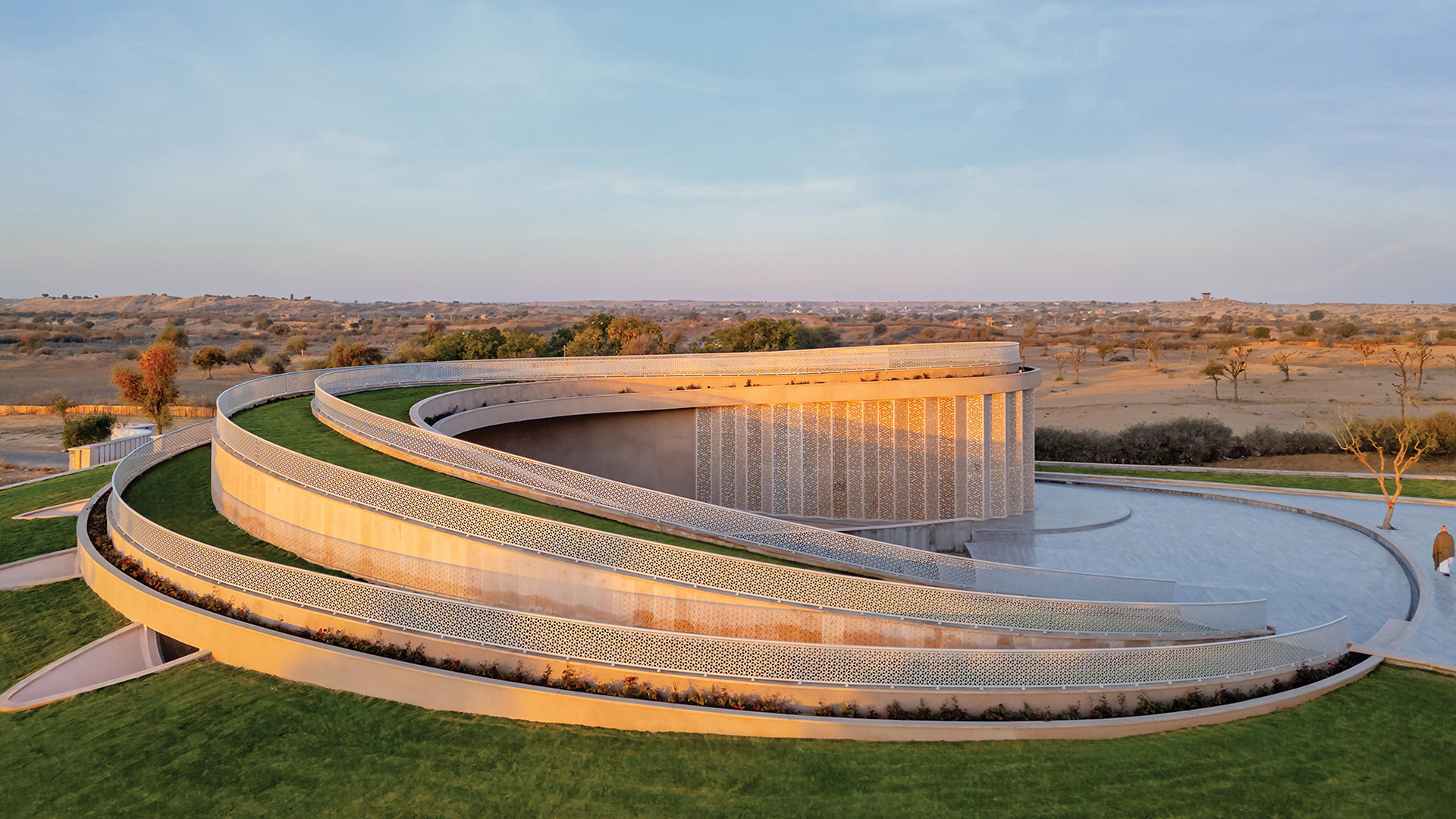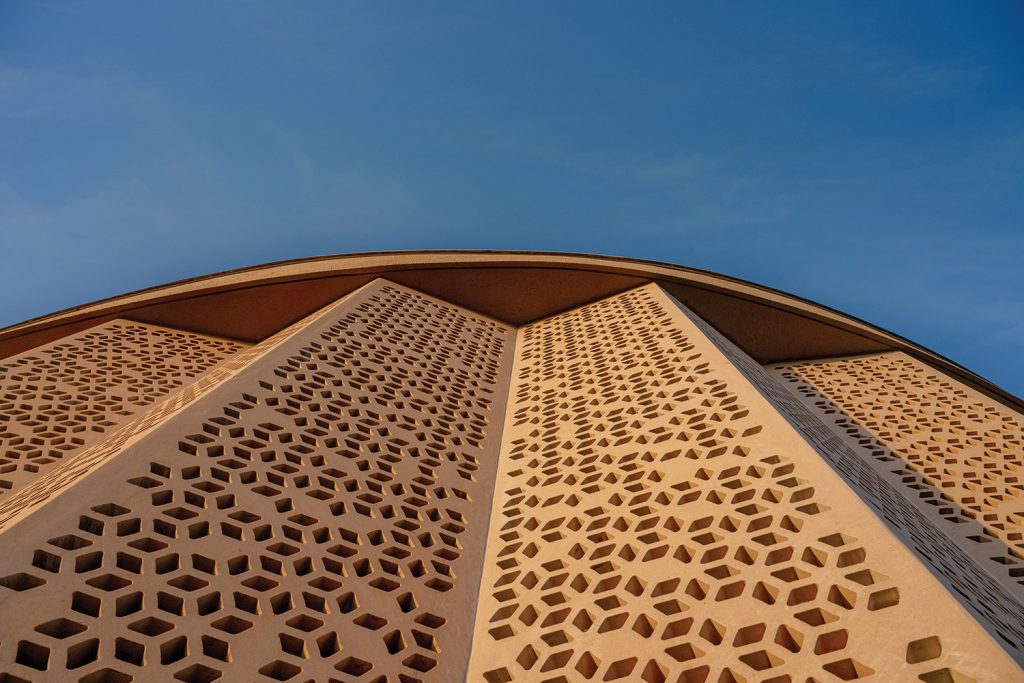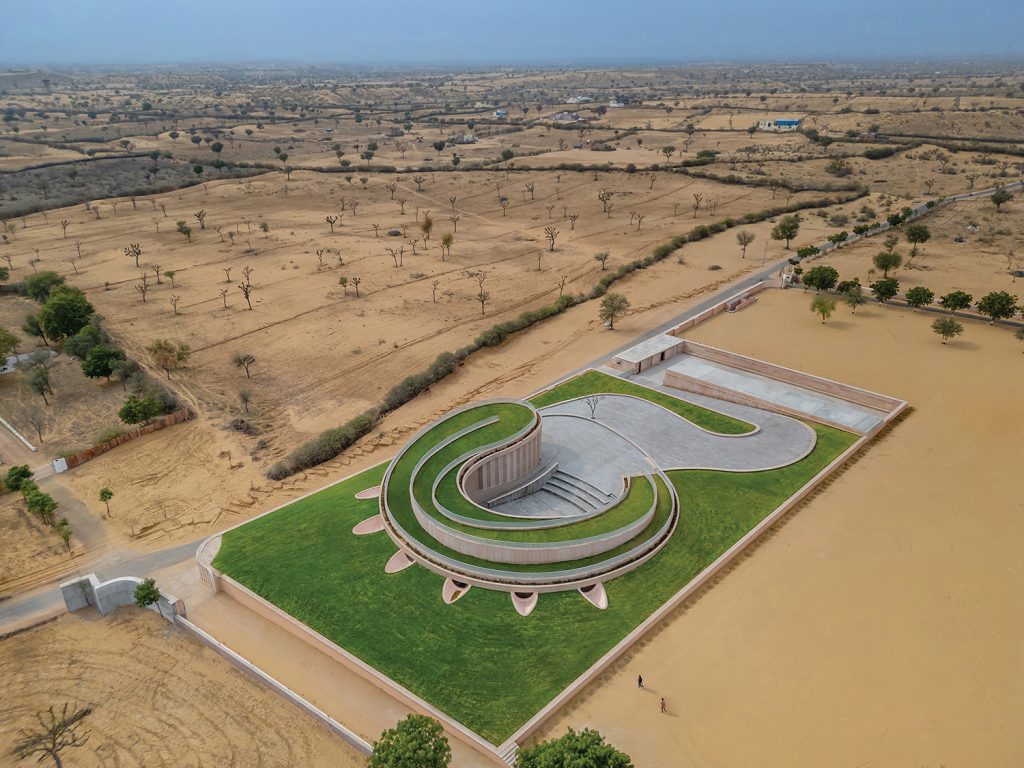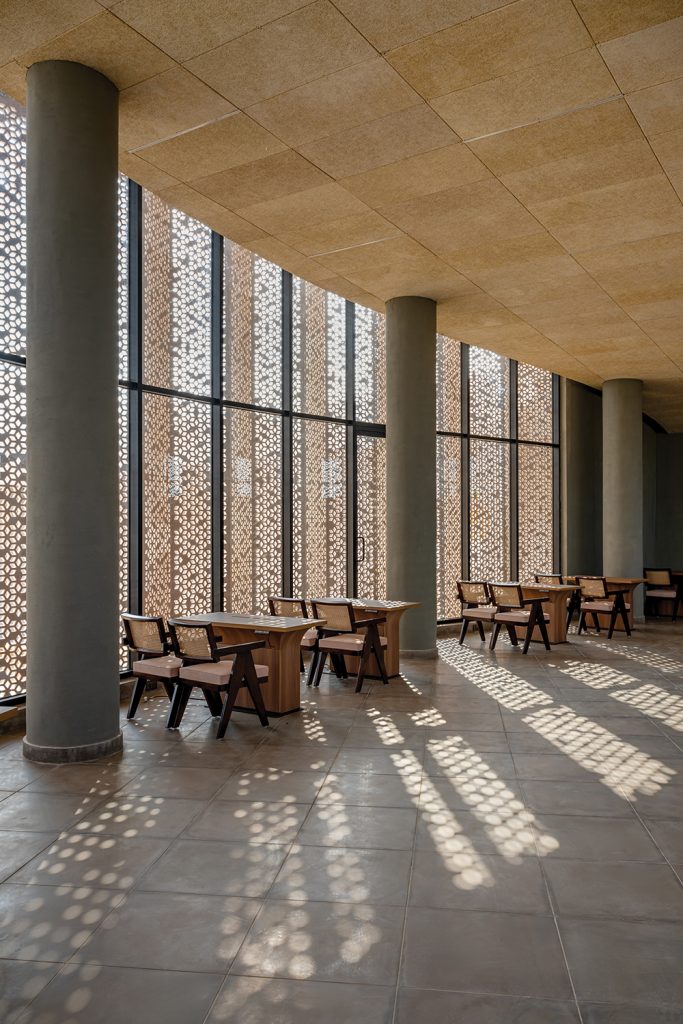Copyright © 2025 Motivate Media Group. All rights reserved.
Nokha Village Community Centre by Sanjay Puri Architects is a geometric marvel
Located in Nokha, Rajasthan, India, the sweeping curvilinear design rises up from the northeastern corner with a dramatic flare

Sanjay Puri Architects recently completed the Nokha Village Community Centre, located in the desert region of Nokha in Rajasthan, India. The sweeping curvilinear volume rises up from the northeastern corner, looping around the site and rising up on the northwest corner to create a north facing open courtyard.
The brief of the clients was to create a memorial for their father, Padmaramji Kularia. Nokha is a district in Rajasthan that encompasses 144 small villages. Studies of the vicinity and the current facilities in the village schools and the village areas fueled the need to create a community centre for all age groups.
The main spiral building of 9,000sqft becomes an inclined garden with two varying slopes, allowing it to be used for recreation and gatherings, and offering views of the surrounding desert landscape from the rooftop.

Natural sandstone screens
Beneath the garden, at the lower eastern side, there is a small museum with a children’s digital library on the higher western side. The southern side is enveloped in a grass covered earth berm to mitigate heat gain in response to the desert climate, where temperatures of 35 to 40°C are common for 8 months annually. The building forms an open courtyard with an amphitheatre to provide a space for music performances, talks, and social interaction.
The ovoid library is sheathed in natural sandstone screens derived from traditional architecture in Rajasthan, with the stone being sourced from the immediate surrounding area.

The main spiral building turns into an inclined garden
These screens reduce the heat gain and create different shadow patterns throughout the day. The library serves all the village schools in the region, most of which do not have libraries of their own. The museum is lit indirectly by scooped recesses within the roof garden berms.
To facilitate the servicing of large gatherings, a linear amenity block housing, cafeteria, toilets, stores, and parking flanks the entrance at the northern side.

Sandstone screens derived from traditional architecture in Rajasthan
The rooftop gardens, the stone screens, the north facing courtyard, and southern grass berm collectively reduce the heat gain, rendering the spaces energy efficient. Rainwater harvesting and water recycling make the building and its construction sustainable, using local craftsmen and contract labor with materials available in the region.
A building with a built up area of only 9,000sqft (810 sqm) generates a 9,000sqft rooftop garden and a 27,000sqft open auditorium and, in addition to the enclosed spaces, generates usable space that is four times more than the built space.

Screens reduce the heat gain and create different shadow patterns
Technical sheet
Location: Silwa-Mulwas, Nokha, Rajasthan, India
Client Name: Padam Interiors
Architect: Sanjay Puri Architects
Lead Architect: Mr. Sanjay Puri
Associate Architects: Omkar Rane, Madhavi Belsare
Design Team: Arjun Gupta
Interior Design Consultant: Sanjay Puri Architects
Structure Consultant: VijaytechConsultants Pvt. Ltd
Landscape Design: Sanjay Puri Architects
Main Contractor: Jagram Suthar
Photography by Vinay Punjwani
The Latest
Step inside Al Huzaifa Design Studio’s latest project
The studio has announced the completion of a bespoke holiday villa project in Fujairah.
A Sculptural Ode to the Sea
Designed by Killa Design, this bold architectural statement captures the spirit of superyachts and sustainability, and the evolution of Dubai’s coastline
Elevate Your Reading Space
Assouline’s new objects and home fragrances collection are an ideal complement to your reading rituals
All Aboard
What it will be like aboard the world’s largest residential yacht, the ULYSSIA?
Inside The Charleston
A tribute to Galle Fort’s complex heritage, The Charleston blends Art Deco elegance with Sri Lankan artistry and Bawa-infused modernism
Design Take: Buddha Bar
We unveil the story behind the iconic design of the much-loved Buddha Bar in Grosvenor House.
A Layered Narrative
An Edwardian home in London becomes a serene gallery of culture, craft and contemporary design
A Brand Symphony
Kader Mithani, CEO of Casamia, and Gian Luca Gessi, CEO of Gessi, reflect on the partnership between the two brands
The Art of Wellness
Kintsugi in Abu Dhabi, situated in a seven-storey villa, offers the ultimate zen retreat
Design Take: Inside the Royal Suite at Jumeirah Al Naseem
With sweeping views of the ocean and Burj Al Arab, this two bedroom royal suite offers a lush stay.
Elevated Living
Designed by La Bottega Interiors, this penthouse at the Delano Dubai echoes soft minimalism
Quiet Luxury
Studio SuCo transforms a villa in Dubailand into a refined home
















